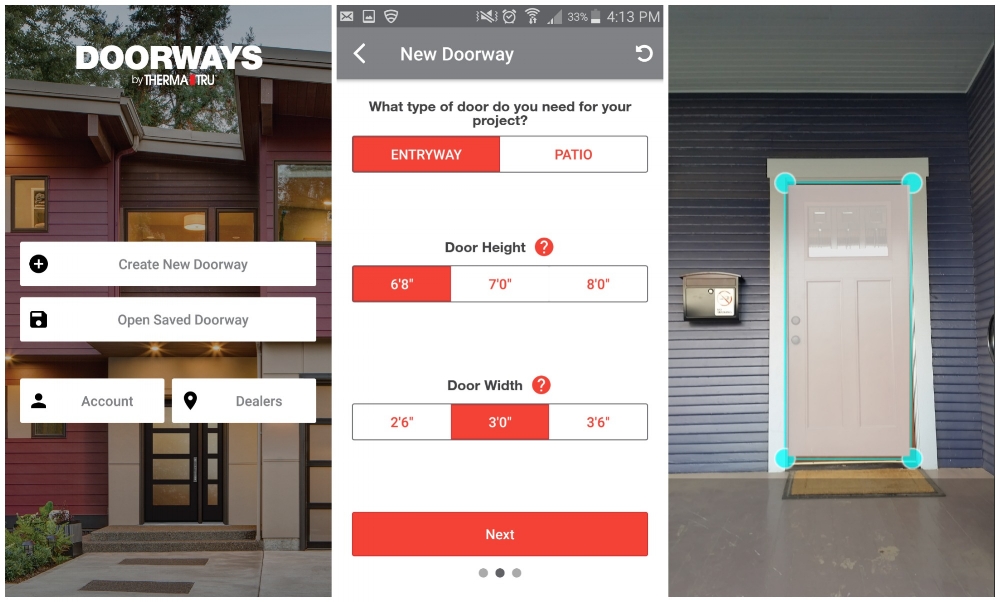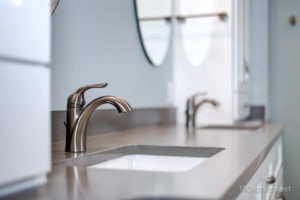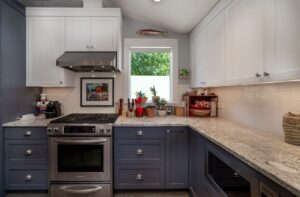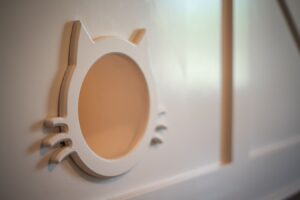Everyone has a front door; do you know what yours is made of?
There are pros and cons to every material. Let’s look at a few of the differences between wood and fiberglass.
Wood
Pros: real wood grain; looks high-end; easy to repair and refinish; a look and feel that’s almost impossible to truly mimic (think about the sound a wood door makes when you knock on it)
Cons: expensive; absorbs moisture; warping, twisting, bowing, peeling, & bubbling; not energy efficient; fades & requires regular maintenance
Other tips: Solid wood doors are by far the most safe of wood doors, but they can cost you upwards of $2,000. If you’re adamant about getting a real wood door, check out options from Pella or Simpson. Their doors are specially made to have a higher insulation value than the average wood door. They’re also fairly cost effective, depending on size/shape/etc. Apply a marine varnish every couple of years to aid in protecting the door from moisture.
Fiberglass
Pros: low-to-no maintenance; no dents, scratches, rotting, deterioration, rust, warping, bowing, or twisting; can have wood grain or smooth finish; very energy efficient (has up to five times the insulation value of wood); can be painted or stained; secure; long lasting; holds up better in extreme weather conditions
Cons: aesthetic; can crack under severe impact (but really, how often does this happen short of someone trying to shoulder your door in?)
Other tips: May or may not cost more upfront, but will definitely save you in the long run. You will still need to re-stain or re-paint the door.
Other Details to Consider
Obviously, the most important details to consider are the size and shape of your door. Is your door a standard size? Standard heights are 6’8″, 7′, and 8′. Standard widths are 2’6″, 3′, and 3’6″. Having a standard size door helps keep costs down; if your door is not a standard size, it will have to be specially made, which means a higher price tag.
There are a lot of different shapes of doors, but the three most common styles are square, round, and arched, with square being much more common than the others.
The next question to ask yourself after deciding size and shape is: Do I want a window in my door? If your answer is yes, you just created two more questions for yourself. First, you have to decide how much window you want. The options are 1/4-lite, 1/3-lite, 1/2-lite, 2/3-lite, 3/4-lite, full-lite, and a center arch. Check out these fiberglass Therma-Tru™ doors for reference:

After you decide how much window you want, you have to figure out what kind of glass you want. Is it going to be clear? Decorative? Privacy? If you want decorative or privacy glass, you can choose from even more specfics. Plus, there are glass coatings like Lo-E to consider.
While we’re on the subject of windows, let’s talk about transoms and sidelites. A transom is a window that is horizontally-placed above the door, and a sidelite is a window placed vertically on either or both sides of a door. Check out these wood sidelite options from Rogue Valley Door:
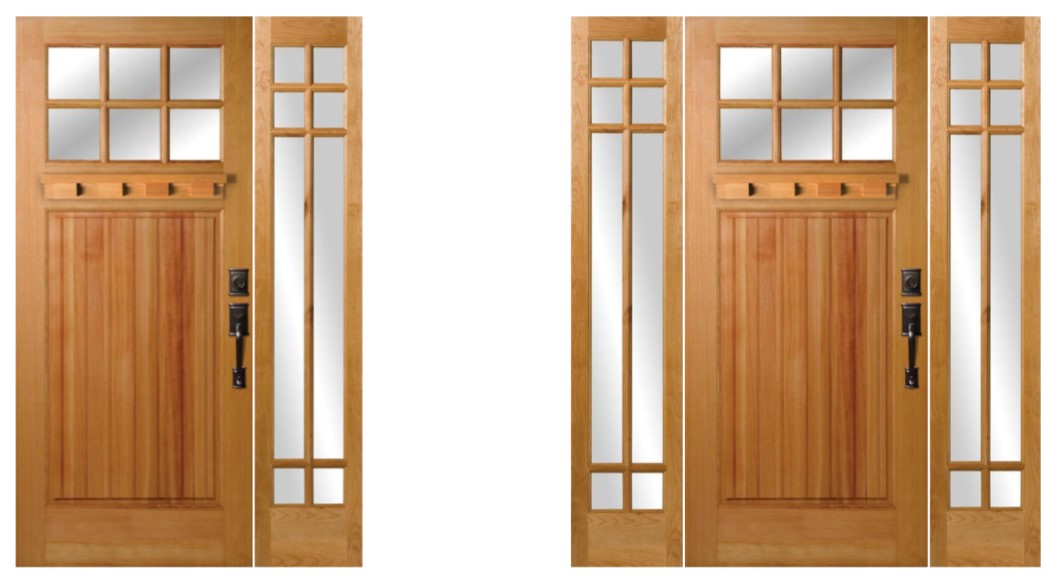
Doors also have lots of little details to consider. Do you want panels? If so, what style and how many? If you’re going for a Craftsman look, you may want to consider adding a dentil shelf.
Think about the architectural style of your home. This may help narrow down the style of door you want.
Once you have the door itself figured out, it’s time to move on the hardware, which is a another topic for another blog post.
Considering a wood door but wanting to know what it will look like before you buy? Check out Rogue Valley Door’s Interactive Door program. You can upload a picture of your front entry way and then play around with different styles to figure out what you like best.
For those interested in fiberglass doors, Therma-Tru has an app called DoorWays you can use to see what your front door could look like. Once you sign in, go to “Create a New Project,” give it a name, select size and configuration, and then the fun stuff begins. You can upload a photo or take one from there in the app.
Browse by glass style, collections, or architectural style. Select the door you want, adjust the finish, glass, and handleset, and click “Update” to view your new door in place. You can save the project to view and make changes later on. If smartphones are not your cup of tea, Therma-Tru also allows you to do all of this online here.
Before you go door shopping, read these great tips from This Old House:
- For complete entry systems, be sure all components come from the same manufacturer. (Many systems are assembled by distributors with parts that might not mate perfectly.) Check that the weatherstripping seals properly and that the threshold interlocks with the bottom edge of the door.
- Look for [lo-e] glazing on window units. For added security, some manufacturers offer glazing designed to resist break-ins. Decorative windows with real lead or brass caming cost more than ones with the fake stuff.
- High-quality steel and fiberglass doors have a thermal break — often a vinyl strip or part of the wood frame — that separates the inside and outside door skins. This prevents outside cold and heat from being conducted through the skin and frame, and frost from forming on the inside surface.
- Picking the right front door will pay off in smoother operation, less maintenance, and added energy savings. You’ll also have an elegant entry that makes a great first impression for years to come.
Still not sure which way to go? Read what other homeowners are saying on Houzz.

